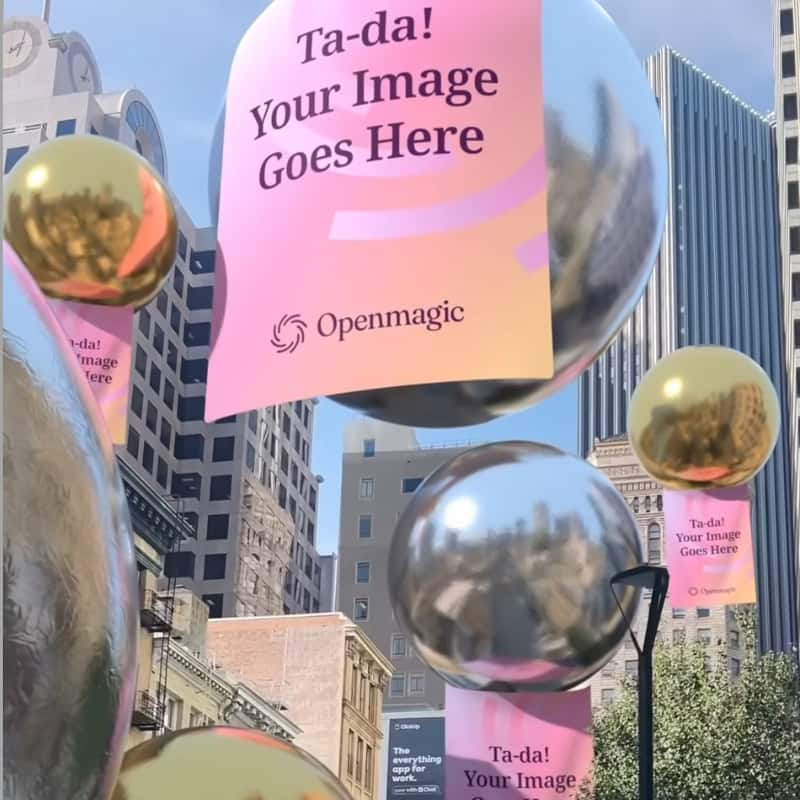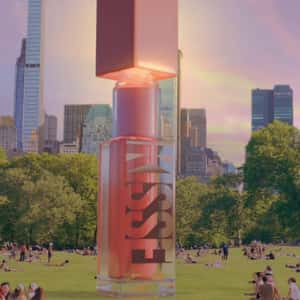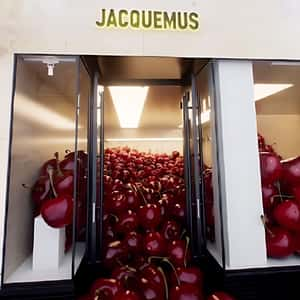Why OpenMagic Isn’t the Tool It Promises to Be
OpenMagic promises to revolutionize CGI advertising with AI-powered templates, but does it truly deliver? Explore everything you need to know about the tool, where it falls short and why SORA 2 might be a better option.

In the fast-evolving world of digital advertising, FOOH ads have become a game changer. This ad format blurs the lines between reality and virtual creativity. One tool that has been impossible to ignore on social media lately is OpenMagic.
With an aggressive marketing push and bold promises of revolutionizing CGI ad creation, it has positioned itself as the go-to platform for effortless, AI-powered video ads. OpenMagic offers customizable templates that let users add their logo, message, or 3D object. This tool claims to remove the need for advanced 3D skills, costly production setups, and lengthy render times.
While its AI-powered automation and ready-to-use templates make AI FOOH ad creation more accessible, one question remains. How much AI is actually at play? Does it push the limits of CGI advertising? Or does it trap creators in a one-size-fits-all template?
Considering OpenMagic for your next CGI campaign? This breakdown will help you determine whether it’s the right tool. And if investing in a more tailored approach is the better choice.
For this article, we took a deep dive into OpenMagic’s capabilities. We broke down its features, strengths, and key drawbacks.
What Is OpenMagic?
OpenMagic is an AI-powered platform designed to simplify the creation of Fake Out Of Home Ads. It’s built for non-design-savvy marketers, small business owners, and agencies. It’s designed for anyone needing a fast, simple way to create engaging video content. So, you can skip the difficult learning curve of traditional 3D tools.
The platform aims to remove barriers in content creation. It makes advanced 3D computer-generated imagery (CGI) and visual effects (VFX) accessible to users without prior editing experience.
This tool is partly similar to Pika, another AI-powered tool for video generation. Read our review here.
What It Promises
Features of OpenMagic include:
- AI-enhanced workflows for seamless content creation.
- An intuitive user interface requiring minimal design skills.
- A library of pre-made CGI video templates where users can simply upload their message, logo, graphic or 3D object.
- Fast rendering and automated video generation, saving time compared to traditional CGI workflows.
Target Audience
The platform is clearly designed for:
- Marketing teams and project managers with little to no design skills.
- Small businesses with limited budgets looking for high-quality CGI ads.
- Agencies that need quick turnaround times for video content.
Technical Breakdown: What’s Under the Hood?
User Interface & Design
OpenMagic’s number one USP lies in its simplicity. The drag-and-drop functionality makes it easy for non-designers to generate content quickly. However, this simplicity comes at a cost – the very minimal creative freedom.
For professional artists, agencies and brands this is a major drawback. Unlike a real CGI pipeline where you can manipulate lighting, textures, object placement, and animations, OpenMagic confines users to its rigid template system. Though we expect OpenMagic to expand its template gallery in the future, the core issue remains – pre-designed templates inherently restrict customization.
Even with a larger selection, users will still be working within preset structures, unable to fully adapt elements to match their unique creative vision.
Compositing & Real-World Integration
A major drawback of OpenMagic is that it lacks true compositing features. Artists can adjust many render passes in traditional CGI workflows. This helps blend them smoothly with real-world footage. OpenMagic, however, skips this process, leading to:
Lighting and Shadows Appear Artificial
One of the biggest giveaways of low-quality CGI is bad lighting. OpenMagic doesn’t let you adjust lighting, so graphics and logos often appear as flat stickers. These can look stuck on top of the footage instead of blending in naturally. In high-end CGI workflows, artists control light direction, reflections, and shadows to match real-world conditions.
No Advanced Tracking
OpenMagic relies on pre-tracked scenes, meaning the camera motion is already baked into the template. If the initial tracking is inaccurate, the issue carries over to every user who selects that template, leading to results where CGI elements do not align properly with the scene.
For inspiration, check out over 700 unique examples in our FOOH Library.
Basic Compositing Limits Realism
Professional CGI tools like After Effects or Nuke use techniques. Alpha channel refinement, rotoscoping, and depth maps make it easy to blend CGI with live-action scenes. OpenMagic lacks these features. So, graphical elements act as simple overlays instead of being deeply embedded in the environment.
In a professional compositing pipeline, artists can adjust CGI elements to focus on depth, shadows, and environmental interactions. This makes the CGI feel like it belongs in the real-world footage.
OpenMagic misses these refinements. As a result, graphics appear pasted onto the scene instead of blended in.
The best FOOH ads make people stop and question whether what they’re seeing is real. That moment of curiosity is what makes FOOH go viral. Audiences will wonder if a giant sculpture is really in the city or if fabric is actually draped over a skyscraper.
AI-Powered Features
Despite its marketing claims, OpenMagic lacks significant AI-driven innovation. While it automates repetitive tasks, it does not yet have any notable AI features like image-to-3D conversion, physics simulations, or intelligent rendering optimizations.
In our assessment, future updates may bring such capabilities, but for now, the “AI” branding feels more like a buzzword than a true differentiator. NVIDIA and Adobe have AI-based CGI tools with advanced features. They include neural rendering and AI-assisted rotoscoping. OpenMagic is still far from these capabilities.
AI is a leading force in the evolution of CGI animation. Did you know ChatGPT can help you create a full FOOH mockup in under 20 minutes? Here’s how.
File Compatibility & Workflow Limitations
For professionals accustomed to industry-standard CGI and video editing software, OpenMagic’s file compatibility poses significant restrictions:
- No Editability Post-Export: Once the video is generated, there is no access to individual elements for tweaking in post-production, which significantly reduces creative control.
- Only .MP4 Output: Unlike tools that allow multi-layered EXR or TIFF sequences for advanced compositing, OpenMagic outputs only .MP4 files, limiting post-production flexibility.
- No Integration with 3D Pipelines: OpenMagic does not support interchange formats like FBX, OBJ, or Alembic, making it incompatible with Blender, Cinema 4D, or Unreal Engine.
Limited Creativity
One of OpenMagic’s biggest limits is its heavy reliance on pre-designed templates. This reliance restricts creative freedom.
This method speeds up CGI ad creation and makes it easier to access. However, it also has some downsides. These can hurt brand differentiation, scalability, and customization.
Users have to use fixed templates, so making unique, brand-specific content is tough. This rigidity makes it hard for brands to create a unique visual identity. And this is especially true when competitors use similar designs.
When multiple companies rely on identical templates, FOOH campaigns risk losing their exclusivity and impact, making them feel repetitive rather than innovative. The narrow set of visual tools may result in campaigns that don’t stand out. Especially when compared to bespoke FOOH executions that leverage custom visual.
In fact, FOOH ads that diverge from these templated effects tend to command more attention and leave a lasting impression.
While the platform excels in speed and ease of use, it ultimately falls short when compared to full-scale CGI workflows that allow for true creative experimentation and cinematic-quality production.
OpenMagic vs. Professional FOOH
When comparing OpenMagic to Fake Out of Home (FOOH) video productions crafted by professional 3D artists and studios, the most significant difference lies in creative control and variety. OpenMagic relies entirely on pre-made templates, making it easy to use but severely limiting originality.
In contrast, working with a professional studio or artist ensures that each project remains unique, innovative, and tailored to a brand’s identity.
Partnering with a skilled 3D studio or artist gives each project a special creative touch. This reflects the unique style and vision of the brand and its creators. From the early concept phase, a professional CGI team can experiment with bold ideas, tailor-made environments, and custom assets – pushing creative boundaries far beyond what template-based platforms allow.
In production, you can refine every detail. In post-production, the options are endless. This allows for cinematic effects, advanced compositing, and dynamic storytelling. These elements, as a whole, can really make a campaign stand out.
Curious about what goes into a successful FOOH production? Check out Part I of our Tools Behind FOOH blog series: Ideation & Concept Development
Finally, Is OpenMagic Worth It?
Ultimately, whether OpenMagic is the right tool depends on your goals. Need a quick CGI ad? OpenMagic has you covered. You can get a templated ad without spending much time or money on custom production. However, for brands seeking originality, creative freedom, and high-quality FOOH visuals, professional 3D artists and studios remain the superior choice.
While OpenMagic is easy to use, this simplicity comes at the cost of flexibility and creative freedom. The trade-off is clear: OpenMagic offers convenience, but it lacks the customization and originality of a “real” FOOH production process.
That being said, tools like OpenMagic represent a positive step forward for the industry. By making CGI more accessible, it pushes the FOOH market toward greater creativity and innovation.
As templated executions grow in popularity, simple ideas like balloons with banners or fabric rolling off buildings will feel even more repetitive. This will push brands and creators to seek more ambitious, dynamic, and eye-catching campaigns. They will turn to skilled 3D artists who truly know their craft.
For great Fake Out Of Home inspiration, check out our FOOH Library with over 1000 examples:
2025 Update: What has changed since SORA 2 dropped
Everything above still stands: for launch-ready FOOH, experienced creators and a real CG/compositing pipeline win on believability and brand fit.
What has changed in October 2025 is the speed of early exploration. Sora 2 makes it easier to generate short test clips that help you pressure-test ideas before production. Think of it as previz for pitches: try multiple directions, feel out scale and rhythm, and learn what sparks that “wait—was that real?” reaction.
If you’re one of the lucky birds who snagged a Sora 2 early-access code in September, you already know how quickly a rough sketch becomes something watchable.
Smart ways to use Sora 2 (without undermining craft):
- Direction sprints: Generate 3–5 quick variations to compare beats, camera motion, and tone.
- Pulse checks: Share internally or with a limited audience to see which direction earns genuine curiosity.
- Hand-off to pros: Use the winning direction to brief your FOOH team—shot list, key frames, scale cues, lighting notes.
Important: Sora 2 is not a production pipeline. It won’t replace multi-pass renders, on-location lighting match, high-fidelity tracking, or meticulous comp. Treat it as a testing layer that de-risks concepts early—then let your creators turn the chosen idea into something believable.



